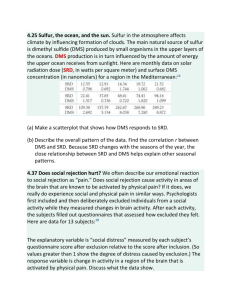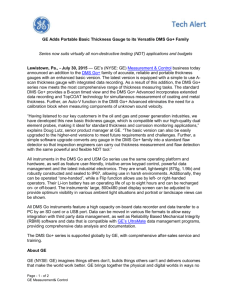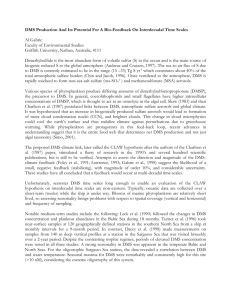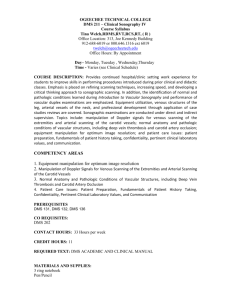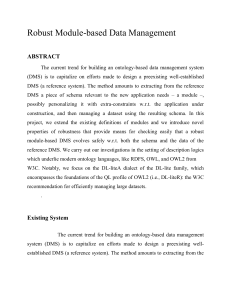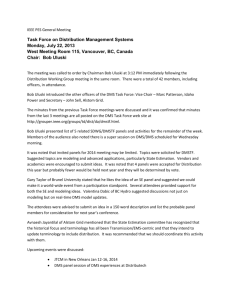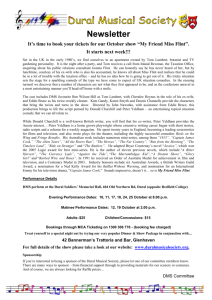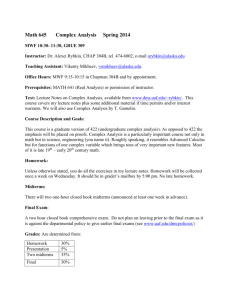Erickson.8
advertisement
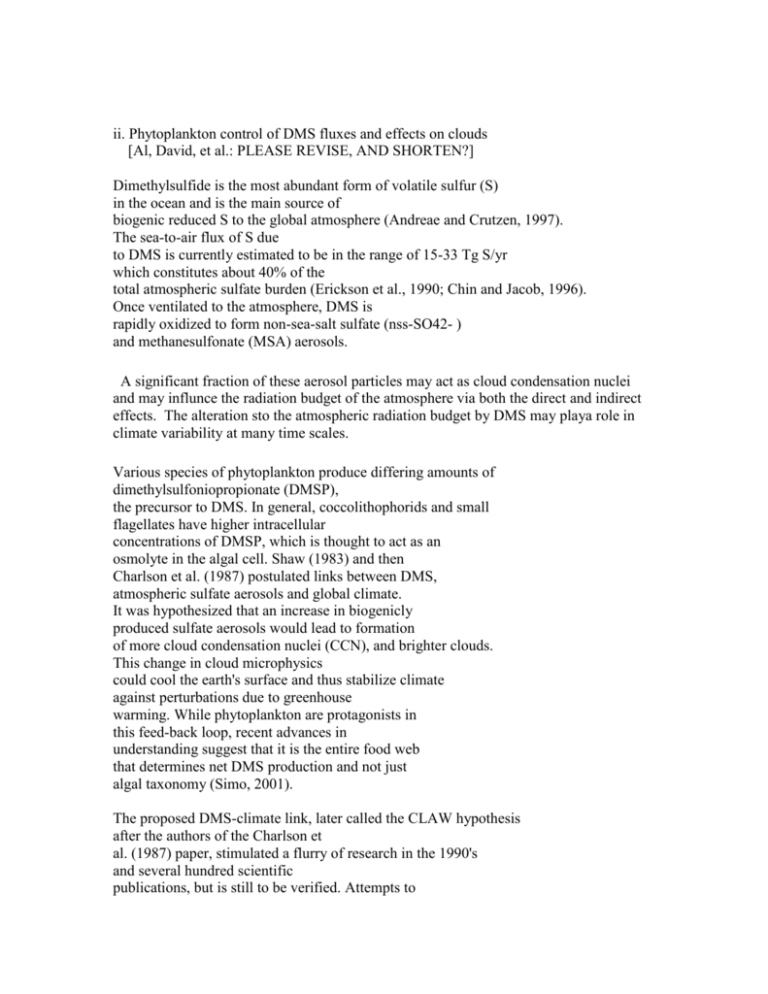
ii. Phytoplankton control of DMS fluxes and effects on clouds [Al, David, et al.: PLEASE REVISE, AND SHORTEN?] Dimethylsulfide is the most abundant form of volatile sulfur (S) in the ocean and is the main source of biogenic reduced S to the global atmosphere (Andreae and Crutzen, 1997). The sea-to-air flux of S due to DMS is currently estimated to be in the range of 15-33 Tg S/yr which constitutes about 40% of the total atmospheric sulfate burden (Erickson et al., 1990; Chin and Jacob, 1996). Once ventilated to the atmosphere, DMS is rapidly oxidized to form non-sea-salt sulfate (nss-SO42- ) and methanesulfonate (MSA) aerosols. A significant fraction of these aerosol particles may act as cloud condensation nuclei and may influnce the radiation budget of the atmosphere via both the direct and indirect effects. The alteration sto the atmospheric radiation budget by DMS may playa role in climate variability at many time scales. Various species of phytoplankton produce differing amounts of dimethylsulfoniopropionate (DMSP), the precursor to DMS. In general, coccolithophorids and small flagellates have higher intracellular concentrations of DMSP, which is thought to act as an osmolyte in the algal cell. Shaw (1983) and then Charlson et al. (1987) postulated links between DMS, atmospheric sulfate aerosols and global climate. It was hypothesized that an increase in biogenicly produced sulfate aerosols would lead to formation of more cloud condensation nuclei (CCN), and brighter clouds. This change in cloud microphysics could cool the earth's surface and thus stabilize climate against perturbations due to greenhouse warming. While phytoplankton are protagonists in this feed-back loop, recent advances in understanding suggest that it is the entire food web that determines net DMS production and not just algal taxonomy (Simo, 2001). The proposed DMS-climate link, later called the CLAW hypothesis after the authors of the Charlson et al. (1987) paper, stimulated a flurry of research in the 1990's and several hundred scientific publications, but is still to be verified. Attempts to assess the direction and magnitude of the DMSclimate feedback (Foley et al., 1991; Lawrence, 1993; Gabric et al., 1998) in the context of global warming due to increased greenhouse gasses suggest the likelihood of a small, negative feedback (stabilizing), with magnitude of order 10%, and considerable uncertainty. These studies have all concluded that a feedback would occur over multi-decadal time-scales. But they did not try to link the spatial structures of specific interdecadal climate loops to regional alterations of DMS production by the ecosystem. *****As the 1976 climate shift occurred, it is certainly plausible that the species assemblage shift that occurred during this time may have also resulted in changes in the distributions of the DMS producing species. This may have resulted in different distribution of DMS related atmospheric particles interaction with atmospheric radiation after 1976 as compared to before. Unfortunately, seawater DMS time series long enough to enable an evaluation of the CLAW hypothesis on interdecadal time scales are non-existent. Typically, oceanic data are collected over a short-term (weeks) while the ship is under way. Blooms of marine phytoplankton are relatively short lived, so assessing seasonality brings problems with respect to spatial coverage (vertical and horizontal) and frequency of sampling. Bates and Quinn (1997) collated data from 11 cruises in the Equatorial Pacific undertaken from 1982 to 1996. They reported that mean DMS levels during El Nino periods were not significantly different from those in normal years. It should be noted that the cruise data were all short-term (< a month), so that a proper interannual comparison was not possible. Despite the major physical changes that occurred during the well-documented 1992 El Nino, the chemical and biological variability was small (Murray et al. 1994). Even though primary production decreased during the ENSO event, this appeared to be due to a reduction in the numbers of larger diatoms, which are not major DMS producers. In contrast to the Bates and Quinn (1997) study, Legrand and Feniet-Saigne (1991) found a good correlation between El Nino events and high MSA concentrations in south polar snow layers deposited over the 1922-1984 time period presumably due to enhanced DMS concentrations at high southern latitudes during El Nino years. Legrand and Feniet-Saigne (1991) suggest this could have been due to higher sea surface wind speed (implying increased sea-to-air exchange), or variations in sea-ice cover, which can affect ocean salinity and hence the osmotic balance in the algal cell for which DMSP is thought to have a regulating role. Analysis of an 8-year time series of atmospheric measurements at Cape Grim, Tasmania (40 41 S, 144 41 E), illustrates the strong seasonality in DMS, and has confirmed the connection between atmospheric DMS and aerosol sulfur species in this region (Ayers et al., 1991; Boers et al., 1994). A multi-decadal times series of MSA observations at Cape Grim is shown in Figure Gabric1. Although there is considerable interannual variability in the magnitude of the MSA peak, the strong seasonality and early January timing of the MSA maximum is remarkably consistent. In the absence of long-term oceanic time series, modeling can provide some insights into the potential for an interdecadal feedback. Gabric et al (in press) forced a regional DMS production model in the Subantarctic Southern Ocean with data on temperature, cloud, wind speed and mixed layer depth under enhanced greenhouse conditions derived from a coupled general circulation model. The GCM and DMS models were run in transient mode over the time period 1961-2080. Interestingly, the results showed considerable interdecadal variability in the annual integrated DMS flux, suggesting the potential for a significant DMS response to changes in the physical forcings. This is an example of the possible implications of the 1976 climate shift. iii. Additional considerations [Shaoping, Fei, Cathy, Ken, Ed, David, et al.: PLEASE REVISE] Nutrient cycling changes may modulate the above two mechanisms. Limiting nutrients include Nitrate, Phosphate, Silicate and Iron. Ocean physics can control the flux of these nutrients intot the regions where radiation effects and DMS fluxes influence climate variability and must therefore be accounted for on interdecadal timescales. The frequency and intensity of Asia dust storms may have some decadal signals and could also potentially alter the ocean productivity on the interdecadal scale. Other, more subtle, effects may also come into play. The transfer velocity (kw) is a function of sea surface turbulence so there are feedbacks with climate through the dependence on wind speed and air-sea interaction. Should the climate system change so tha the surface wind speeds and air-sea interaction change, the transfer velocity would also change. An example would be that for a fixed surface ocean concentration of DMS, an increase in the wind speed would increase the transfer velocity, in a non-linear way, and increase the flux of DMS from the ocean to the atmosphere. [David, PLEASE EXPLAIN THAT] Ecosystems change the surfactants on the sea surface and hence modulate the wind stress magnitude. These effects, though, are probably much smaller than the ones already discussed. It is unlikely that changes in CO2 in the atmosphere (and its consequent effect on radiation) due to changing oceanic ecosystems is important on interdecadal timescales. The reservoir of CO2 in the atmosphere is far too large ot be impacted by oceanic ecosystem CO2 flux or sequestration. [Ken, Fei: IS THIS THE RIGHT WAY TO SAY THIS?]. [Ed: PLEASE ELABORATE AND BLEND IT IN] The drawdown of macronutrients (N and P) in HNLC regions, particularly the southern ocean, and changes in ballasting of exported organics (calcium carbonate versus silica) are possibly major feedbacks. That would give Aeolian iron inputs a chance to catch up with the input of N and P from upwelling. The most likely mechanism leading to a switch from calcium carbonate to silica would be a reduction in pH. However, diatoms cannot make silica without silicate, so there is a limit on how far that transition can go. Erickson, D. J. III, S. Ghan and J. Penner, 'Global ocean to atmosphere dimethyl sulfide flux', J. Geophys. Res., 95, 7543-7552, 1990.
